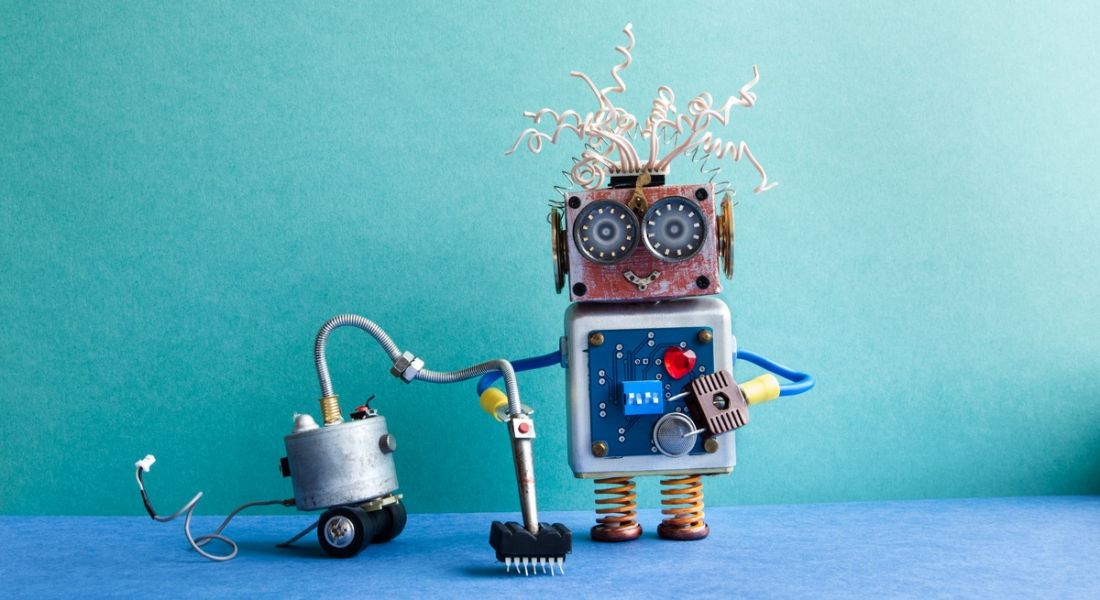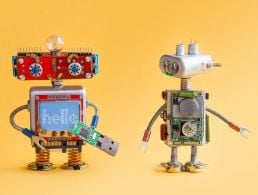Do workers and AIs have to be enemies? Not necessarily. If deployed correctly, machine learning and AI can free up workers from the most odious of tasks, writes Vin Vashishta.
The algorithms are coming for your jobs. We hear that refrain over and over, but does anyone really buy into that narrative? When people are completely replaced by machines, something is lost in almost every case. Be it personal service, creativity, leadership or advanced decision-making, people have valuable contributions to make.
The near-term future of machine learning (ML) systems will be driven by enabling, not replacing, people. However, it isn’t enough to simply state: ‘Enable your employees with AI.’
There needs to be some substance behind that, an answer to the question, ‘How exactly do we achieve that goal?’
The futurists are well meaning, but predicting the implications of ML in the workplace requires a deep understanding of neural networks – specifically, their limitations.
It also requires an understanding of how people interact with ML-based systems, an emerging area of research in the AI field. Given those two areas of focus, I’ve written up a few tips for building systems that make people more efficient and effective at their current jobs.
Done right, employees will embrace practical, highly functional AI. Done wrong, AI doesn’t live up to its promise because it isn’t used. It’s the software equivalent of a paperweight and a complete waste of money.
Automate the most hated work
I ask groups a simple question: ‘What task do you regularly do that you never want to do again?’ The responses I get will haunt your work-related nightmares.
Mind-numbing tasks such as looking through a 300-page bid for errors. Trying to guess the right keywords to search for, then reading through several hundred résumés to get a handful of qualified candidates. Spending months searching the internet, conferences, industry groups and calling around to find new suppliers.
Replace the manual error search with an anomaly detection algorithm. It reads through the bid and presents the user with the highest anomaly scored items for review.
Replace the manual résumé search with a semantic search algorithm. It reads through a job description and finds the résumés that match the requirement. Those get presented to the user for review.
Rather than removing a person from the process altogether, take away the drudgery.
This frees the employee to exercise their judgement, which is where their real value comes into the task. It also allows for continuous training for the ML algorithm. ML improves with consistent user feedback, so interfaces like these turn a good algorithm into an amazing algorithm.
Find hidden time-sinks
This is another employee satisfaction issue that ML can resolve, which also returns a lot of productivity to the business.
I listen for people to say things like, ‘I look on the company intranet for’ or ‘I’ve got a few really good resources to find’ or ‘I search online’. These are my verbal cues for a knowledge or people-search task.
Mass, generic communications and outreach are also high-effort but low-skill – let ML handle that, too. People are needed to build the outline and proof the final draft. ML can handle everything else, from transforming the outline into content to sending it out and managing responses.
Here again, we keep people involved in the process at critical points and allow them to provide the algorithms with feedback to learn from.
Any sort of bulk screening tasks (like screening out inappropriate posts) or error-checking tasks (like code reviews) are huge time-sinks that ML can automate.
There are many more examples. The key factors to look for are low-skill, time-consuming, repetitive tasks. The structure of the data doesn’t really matter any more. ML algorithms can handle text, video, pictures and structured data points with high degrees of accuracy.
Automate, automate, automate
Processes and administrative tasks are perfect for automation. Anything that has a well-defined, stable, rule-based workflow can be automated. There is already a ton of software out there to do this.
However, on top of every process and/or workflow is a layer of administration. Someone is forced to spend their time keeping the process going.
ML can handle the basic decision-making around administering a process. Using the logs from the administration tasks, an algorithm can learn to classify what action to take based on the state of each item in the workflow.
Prioritisation is another area ML can automate to make employees’ lives more productive. Communications are a great example; machine learning can prioritise emails based on content or sender, putting the highest-priority items at the top of the employee’s attention. The same goes for phone messages or competing action items.
Let ML classify importance so people don’t have to scan through 999 unread, high-priority emails to find the three that are actually relevant.
A great example of this concept can be applied to agile. Everything from estimation to prioritisation can be automated using ML. These are simple classification tasks with infrequent review needed to continuously train the algorithm. That allows less time to be spent managing agile and more time to be spent building the product.
It also allows ML to optimise the development process. With limited resources, how does the business build the highest-earning products possible?
When I hear fastest, shortest, highest, quickest, etc, I’m probably hearing an optimisation problem. ML is exceptional at solving those, making it a good tool for processes and continuous improvement.
Free employees for higher ROI tasks
I own a car that essentially drives itself. I live in both San Francisco and Reno, so I make the drive between the two cities often, putting the car into self-driving mode for most of the trip.
I noticed something very interesting happened when I do that. You’d expect my mind to wander or for me to have very little to do, but instead I’ve begun to work on other driving tasks that I don’t typically have the free focus to do.
I don’t have to worry about staying in the lane or keeping my distance safe. Instead, I’m looking for a driver who’s about to meander into my lane or any number of other one-off scenarios. The car is handling the simple, repetitive tasks while I’m looking ahead for more complex scenarios that I have been freed up to manage.
That’s how AI enables employees rather than replacing them. What people realise when they’re not doing all the monotonous tasks is how much of the big picture they’ve been missing.
Monotonous tasks put blinders on employees; AI allows employees time to look around and look ahead. People with that latitude become more strategic, forward-thinking employees.
Both return higher value to the business. AI’s impact on the enterprise is amplified by this effect. Not only does automation increase productivity, it increases the value of productivity. Employees spend their work hours doing higher-value tasks, actually maximising their potential rather than being limited by the nature of the tasks that have to get done.
Vin Vashishta is founder and chief data scientist at V-Squared Data Strategy Consulting.




